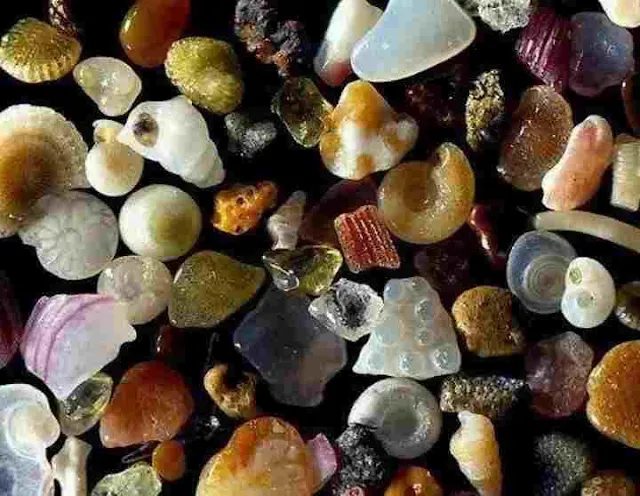How Sand Looks Magnified Up To 300 Times (Photos)
Under a microscope, sand appears incredibly diverse and intricate. Magnified grains of sand reveal a variety of shapes, colors, and textures that are invisible to the naked eye.
Some grains are smooth and rounded, while others are jagged and crystalline. This diversity comes from the different materials that compose sand, such as quartz, volcanic rock, coral fragments, and even tiny shells.
Dr. Gary Greenberg, a photographer and inventor, has been capturing the beauty of magnified sand grains for years. His photos reveal the intricate details of each grain, from the delicate curves of seashells to the sparkling crystals of quartz.
 |
| This Is How Sand Looks Magnified Up To 300 Times |
Sand under a Microscope
Here are some of the amazing things you can see when you magnify sand up to 300 times:
Seashells: Seashells are one of the most common types of sand grains. When magnified, they reveal their intricate and delicate beauty. The curves of the shell, the colors of the shell, and the patterns on the shell are all stunning to behold.
Quartz: Quartz is another common type of sand grain. When magnified, it reveals its sparkling crystals. The crystals can be any color, from clear to white to pink to purple.
Other minerals: There are many other types of minerals that can be found in sand. These minerals can also be seen when sand is magnified. Some of the most common minerals include feldspar, mica, and olivine.
Oolites: Oolites are small, round grains of sand that are made of calcium carbonate. They're often found in beaches that are made of coral reefs.
Foraminifera: Foraminifera are tiny, single-celled organisms that have hard shells. Their shells are often found in sand, and they can be used to date the sand.
Diatoms: Diatoms are tiny, single-celled organisms that have hard walls made of silica. Their walls are often found in sand, and they can be used to date the sand.
Magnifying sand up to 300 times can be a fascinating experience. It can help you to appreciate the beauty and complexity of this seemingly simple material.


48.webp)
.webp)


%20(1).webp)





